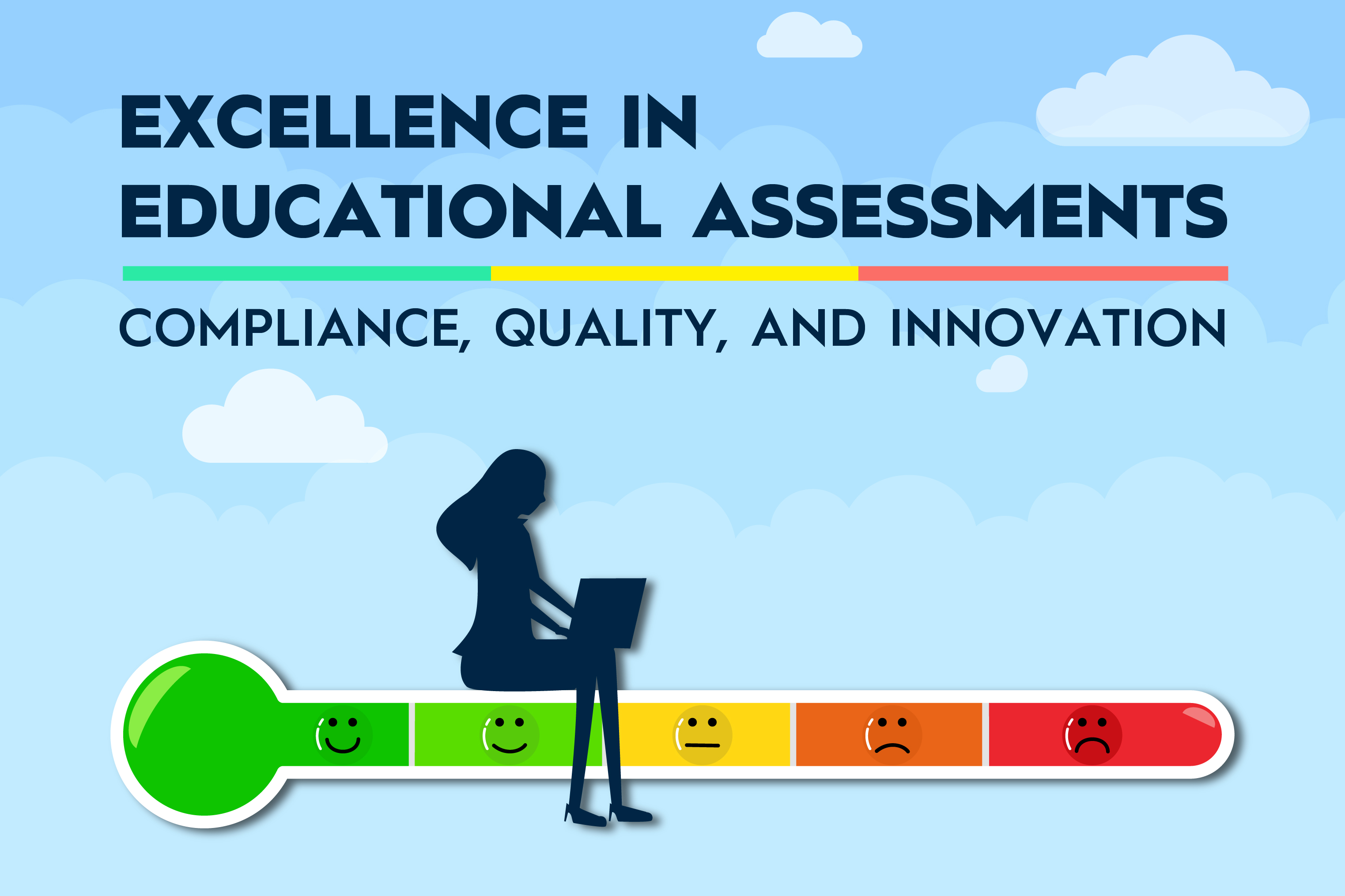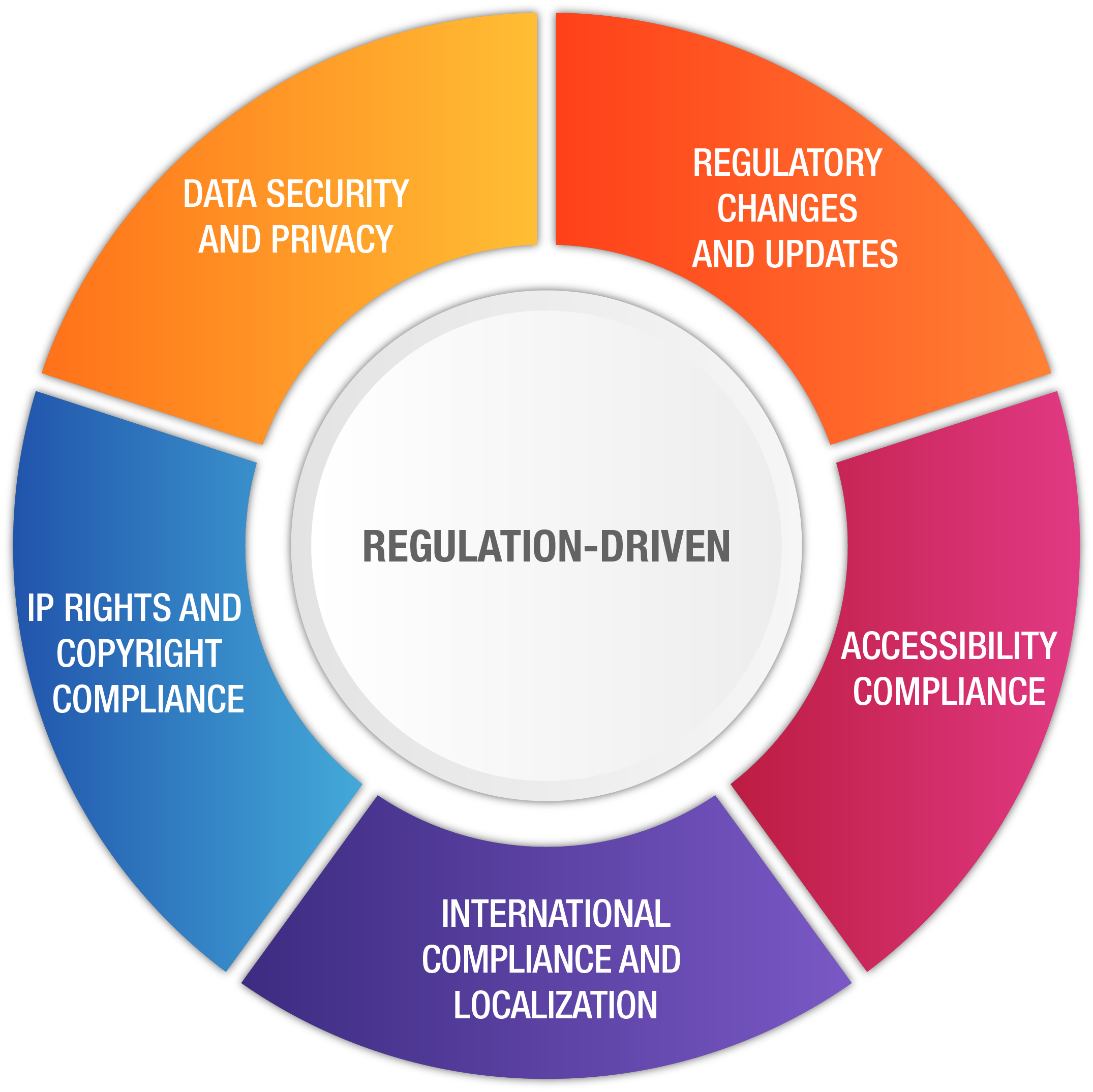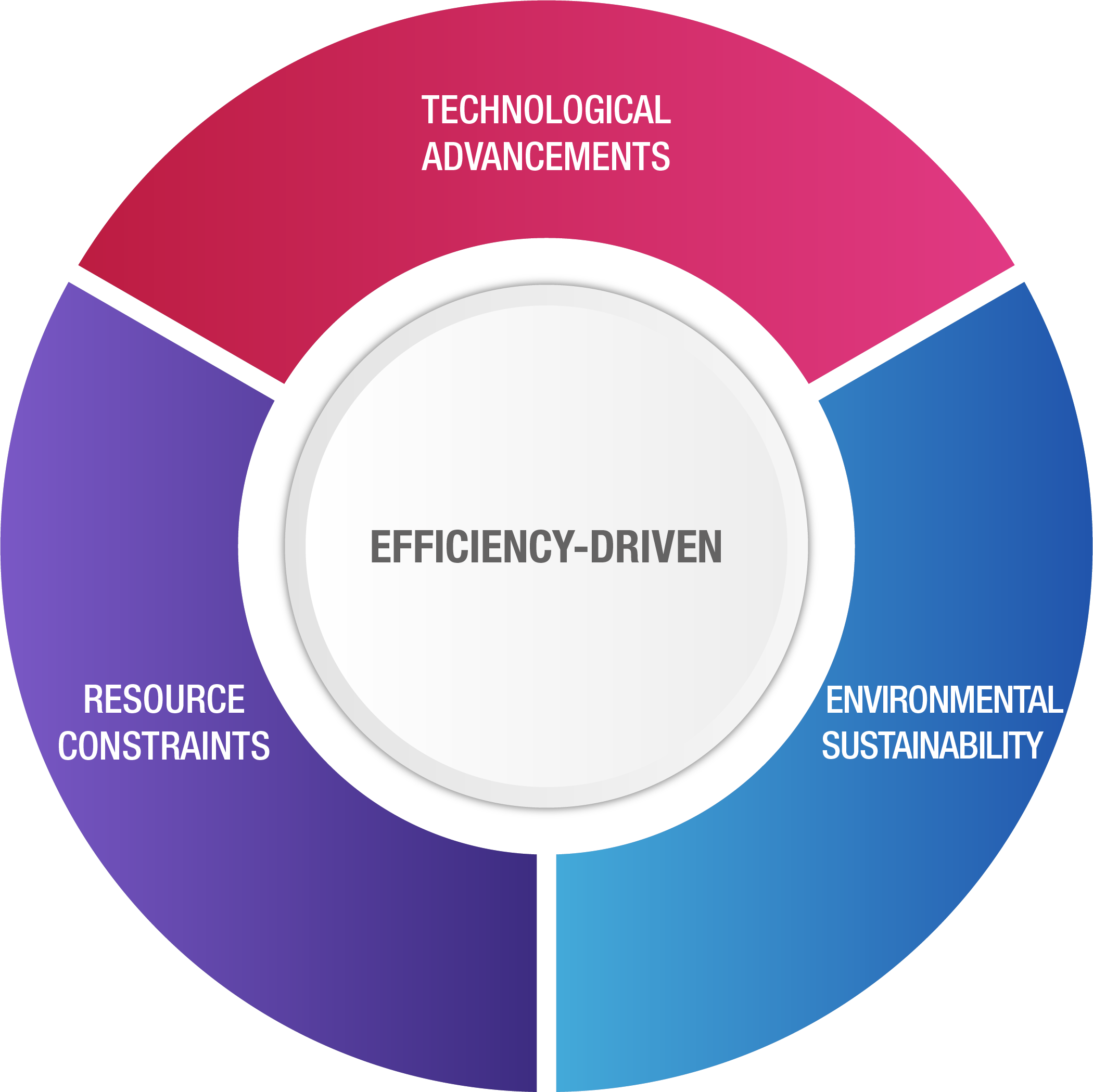
February 29, 2024
Excellence in Educational Assessments: Compliance, Quality, and Innovation
Subscribe to Vretta Buzz
The recent Home Office English test scandal, Operation Varsity Blues, Atlanta Public Schools Cheating Scandal, International Baccalaureate Grading Controversies, and SAT security breaches exemplify where compliance was compromised, resulting in breaches of regulation, standards, and overall integrity within the educational assessment cycle and beyond. What we have here is the reality with all these cases, and we are tasked to operate in such a challenging landscape.
Additionally, educational assessment, like any field, undergoes fluctuations due to political, financial, institutional, and social pressures, further compounded by the challenges of increasing digitalization. Regardless of ongoing power struggles and challenges within these domains, the core work of assessments must continue uninterrupted. Therefore, a crucial task for senior management in assessment bodies within such a demanding landscape is to ensure that operations not only continue seamlessly but also evolve, leaving a legacy of constant progression.
This article simplifies the concepts and practices of adhering to regulations, standards, efficiency, and engagement in the assessment modernization journey to foster a culture of compliance, quality, and innovation within assessment organizations.
Understanding Compliance in Educational Assessments
We understand new or complex concepts easier when we link them to familiar associations. With this strategy in mind, let's explore compliance in educational assessments through the lens of ‘safety’, ‘happiness’, and ‘hope’. In this context, safety is synonymous with compliance, focusing on adherence to legal requirements. Happiness reflects the quality standards of assessments, ensuring they are fair and effective, while hope embodies the drive for innovation, pushing the boundaries for better educational assessments. Below, we will discuss this concept from general, specific, and institutional perspectives.
Generally, employee attitudes towards compliance are influenced by their understanding of its meaning and practical impact on their work. In more practical terms, compliance is about adhering to regulations - comparable to having a good lock and making sure locking one's home to prevent burglary. Therefore, regulatory compliance often requires the development of standards or internal guidelines, similar to using sticky notes on a refrigerator, to ensure the organization operates legally and according to best practices. Specifically, within the day-to-day operations of educational assessment bodies, compliance involves adhering to both government regulations and industry-recommended standards, which guide processes and procedures throughout the assessment cycle.
Institutionally, when industry standards are adopted into the regulatory framework or become part of an organization's internal regulations, they transition from recommendations to mandatory requirements. While compliance regulations provide the essential legal basis for minimum requirements, industry-specific standards encourage us to exceed these basic requirements and strive for excellence. This ambition nurtures a culture of progressive compliance among employees within an educational assessment organization, aiming for continuous improvement and innovation.
Role of External Bodies in Compliance
External bodies function similarly to both existing and invited family members, akin to a parent ensuring a child brushes their teeth before bed or, as in Eastern cultures, a mother-in-law visiting her son's house to oversee the household's state of affairs. Let's categorize audits/reviews and organizations based on their autonomy and impact into three distinct categories: Mandatory Compliance Authorities, Voluntary Evaluation Bodies, and Guideline Providers. This classification will help clarify the roles and influence of each external entity within the educational assessment compliance landscape.
Mandatory Compliance Authorities: In this category, there might be an organization like Ofqual - The Office of Qualifications and Examinations Regulation that sets regulations for exam boards in the UK context for regulatory compliance purposes, or ministries of education in countries where the ministry handles policy-making and regulatory functions, or a commission under the presidential/prime minister office designed to ensure the assessment body remains impartial in its interactions with ministerial functions. Data protection authorities in each country require compliance with regulations like the GDPR, while laws such as the Americans with Disabilities Act (ADA) in the United States mandate digital accessibility and prohibit discrimination against individuals with disabilities in all areas of public life.
Voluntary Evaluation Bodies: Educational assessment organizations have the option to engage with auditing or professional product review bodies for voluntary check-ups tailored to their specific needs, whether for a product, process, or the entire assessment cycle, based on the evaluation's objectives.
Thematic Evaluations: Organizations may seek specialized audits that focus on specific aspects of their operations, conducted by entities with specialized expertise. For example, ALTE - the Association of Language Testers in Europe, offers product audits in language assessment and awards the Q-Mark upon successful completion. With the recent surge in digitalization, some organizations might also consider undergoing a digitalization review. Engaging in both types of evaluations acts as a strategic move for building an organizational development roadmap.
Quality and Certification Evaluations: Organizations focused on improving quality management, ensuring certification integrity, and validating the competency of their conformity assessment processes, as well as those providing auditing services, are encouraged to adopt ISO 9001 (Quality Management Systems), ISO 17067 (Fundamentals of Product Certification and Guidelines for Product Certification Schemes), and ISO 17065 (Requirements for Bodies Certifying Products, Processes, and Services) standards.
Technology and Data Certifications: Technology providers aiming to enhance information security, protect cloud-based data, and manage privacy in educational assessment context should consider acquiring standards such as ISO 27001 (Information Security Management), ISO 27017 (Cloud Security), ISO 27018 (Protection of Personally Identifiable Information in Clouds), and ISO 27701 (Privacy Information Management). Additionally, achieving SOC 2 Type 2 and SOC for Cybersecurity certifications can significantly enhance the transparency and cybersecurity of technology providers within the assessment industry.
Accreditation Councils: National accreditation councils are like guardians of excellence in service. For example, the Netherlands' RvA (Dutch Accreditation Council) and the UKAS (the National Accreditation Body for the United Kingdom)evaluate and accredit certification bodies, verifying their services for competence and impartiality. When a certification body in educational assessment issues a compliance certificate, whether accredited or not, it underscores their institutional reliability and dedication to excellence, thus enhancing trust among clients.
Through engaging in voluntary evaluations with these bodies, educational assessment organizations identify needs for a strategic organizational development plan, ensuring their operations are modernized in line with international standards.
Guideline Providers. These entities provide guidelines and best practices without conducting evaluations, serving as resources for educational assessment organizations to voluntarily align their operations with industry standards.
National Council on Measurement in Education (NCME), International Test Commission (ITC), and Educational Testing Service (ETS), provide practical guidelines for educational, and psychological testing. These guidelines assist assessment organizations, particularly in the initial stages of developing an assessment cycle, regardless of the test delivery mode.
The Council of Europe (CoE)’s Common European Framework of Reference for Languages (CEFR) serves as a guidance for scaling language proficiencies both for learning and assessment purposes. Similarly, UNESCO provides guidelines for the ethical use of AI in education and assessment.
World Wide Web Consortium (W3C) issues Web Content Accessibility Guidelines (WCAG) to ensure digital platforms are developed inclusively and are accessible to all candidates, including those with special needs, thereby encouraging companies to draft accessibility policies.
The International Association for Educational Assessment (IAEA)’s Recognition Committee piloted the IAEA International Standards for Educational Assessment with some IAEA member organizations. This initiative is set to serve as a benchmark of good practice for educational assessment bodies.
Adopting guidelines from providers sets a solid foundation for conducting voluntary external audits, complemented by the ever-present regulatory oversight. Additionally, participating in these evaluations can potentially increase eligibility for various government-run tenders.
Ensuring Compliance, Quality, and Innovation: Challenges and Strategies
Achieving a balance between uninterrupted daily work, and the drive for innovative solutions amid industry-specific challenges in educational assessment requires developing appropriate strategies that foster a culture of compliance, quality, and innovation within an assessment organization. Addressing the variety of challenges involves categorizing them into distinct areas, each with tailored strategies. This framework, divided into four key areas: regulation-driven, standards-driven, efficiency-driven, and engagement-driven challenges and strategies in educational assessments. This categorization approach ensures a well-rounded distribution of current challenges and futuristic strategies, facilitating a comprehensive understanding of the multifaceted nature of compliance, quality, and innovation.
1. Regulation-driven. This category focuses on adherence to legal requirements and the implementation of regulations:

Data Security and Privacy
Challenge: Protecting sensitive data in accordance with laws and standards.
Strategy: Implement GDPR, ISO 27001-aligned data protection measures, and conduct regular security audits.
Regulatory Changes and Updates
Challenge: Keeping pace with evolving legal regulations.
Strategy: Conduct periodic reviews of regulations and enhance staff training on key compliance areas.
IP Rights and Copyright Compliance
Challenge: Respecting intellectual property laws in assessment content.
Strategy: Enforce copyright compliance policies and conduct content audits in item authoring.
Accessibility Compliance
Challenge: Making assessments accessible to all students, including those with special needs.
Strategy: Adhere to ADA and WCAG guidelines, and prioritize technology solutions in providing necessary accommodations.
International Compliance and Localization
Challenge: Complying with international laws and lingo-cultural considerations.
Strategy: Research legal requirements and localize assessments per region.
2. Standards-driven. This category encompasses the application of scientific principles and adherence to industry standards for quality and ethical integrity:

Curricular Alignment
Challenge: Ensuring assessments align with textbooks and syllabi content.
Strategy: Develop review processes to ensure assessments match curricular goals and learning outcomes.
Quality Assurance
Challenge: Maintaining high standards in assessments.
Strategy: Employ a continuous improvement approach guided by educational testing standards.
Ethical Dilemmas
Challenge: Addressing biases in AI-driven assessments not covered by current regulations.
Strategy: Develop ethical guidelines based on industry best practices and available recommendations.
Cultural and Linguistic Diversity
Challenge: Creating unbiased assessments for diverse populations.
Strategy: Incorporate guidelines from standards such as ETS Standards for Quality and Fairness for inclusive assessments.
3. Efficiency-driven. This category focuses on optimizing technological implementation, resource management, and environmental sustainability to support the overarching legal and scientific standards:

Technological Advancements
Challenge: Ensuring new technologies comply with data security and privacy standards.
Strategy: Collaborate with IT to adopt ISO-compliant technologies for secure online testing platforms.
Resource Constraints
Challenge: Efficiently allocating resources to meet compliance requirements amidst budgetary constraints.
Strategy: Focus on critical compliance areas, leveraging for optimal resource allocation.
Environmental Sustainability
Challenge: Reducing the environmental impact of testing materials and operations.
Strategy: Adopt sustainable practices and encourage digital assessment methods where possible.
4. Engagement-driven. This category emphasizes cultivating stakeholder commitment, managing data responsibly, addressing security incidents, and promoting continuous professional development to bolster the organization's growth and compliance culture:

Stakeholder Engagement
Challenge: Ensuring stakeholder commitment to compliance and standards.
Strategy: Launch engagement programs emphasizing the importance of compliance with accessibility and privacy laws.
Student Data Management and Retention
Challenge: Responsibly managing sensitive student data.
Strategy: Establish data management policies that comply with data protection laws.
Incident Response and Breach Management
Challenge: Effectively managing security incidents and breaches.
Strategy: Develop an incident response plan including immediate actions and post-incident analysis.
Continuous Professional Development
Challenge: Keeping professionals updated on compliance, ethics, and best practices.
Strategy: Promote continuous learning through workshops, seminars, and training programs.
AI-Driven Excellence in Educational Assessments
AI-Driven Compliance and Quality Assurance
Since AI relies on data to train itself through a model, the first step in preparing the data would be automating data protection measures and regulatory compliance checks, which ensures AI-driven adherence to legal standards. Additionally, AI could address quality assurance by reducing biases in assessments and ensuring representative coverage of content. This is achieved by employing algorithms and auditing tools within item review or test assembly processes, respectively. Overall, this AI application not only streamlines compliance processes but also elevates the quality of educational assessments, making them more inclusive and equitable.
AI-Enhanced Efficiency and Engagement
AI significantly enhances operational efficiency throughout the assessment cycle, improving item generation, test proctoring, data analytics, and student reporting. As policymakers promote AI's integration into education - a move exemplified by the UAE's approach to personalized learning, and assessment - the imperative to secure public trust intensifies. The foremost priority is establishing trust in AI applications, achievable through active stakeholder engagement and increased transparency. Examples such as the automated alignment of assessments with curricular goals, and the accessibility of assessment data and testing itself underscore the importance of transparency, trust, and accountability in education. Therefore, effectively implementing AI in educational assessments necessitates fostering a culture of continuous dialogue and feedback among educators, assessors, and learners.
Building a Culture of Compliance for Excellence
In conclusion, internationally widespread incidents highlight the critical need for unwavering adherence to compliance, quality, and innovation. By implementing a comprehensive framework that includes regulation-driven, standards-driven, efficiency-driven, and engagement-driven strategies, educational assessment organizations can ensure assessments are both innovative and uphold the highest levels of integrity and quality. Collaborating with external bodies for alignment with industry standards further strengthens this commitment, embedding the principles of compliance, quality, and innovation deep within the organizational culture. This proactive stance not only addresses current challenges but sets a benchmark for excellence in educational assessments.
About the Author
Vali Huseyn is an esteemed educational assessment specialist, widely recognized for his expertise in enhancing every aspect of the assessment cycle. His capability to advise on the development of assessment delivery models, manage various levels of assessments, innovate within data analytics, and devise swift, secure reporting techniques sets him apart in the field. His work, enhanced by collaborations with leading assessment technology firms and certification bodies, has greatly advanced his community's assessment practices. At The State Examination Centre of Azerbaijan, Vali significantly contributed to the transformations of local assessments and led key regional projects, such as reviews of CEFR-aligned language assessments, PISA-supported assessment literacy trainings, and the institutional audit project, all aimed at enhancing the assessment culture across the Post-Soviet region.
Discover pioneering practices in modernizing assessments and gain insights into the future of educational assessments by connecting with Vali on LinkedIn.


